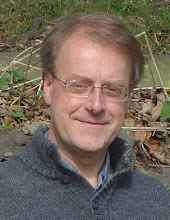 Actually, that's a bit of an exaggeration but not much.
Actually, that's a bit of an exaggeration but not much.Physarum polycephalum is a very clever organism which spreads as it searches for food. It does so in a very efficient way and scientists have found for example that it can find the best way through a maze.
 They have also experimented with getting it to map transport networks. Two scientists have just reported* that they had food representing the UK's major cities, put the organism on London and watched. The result pretty much matched the UKs motorway network - except for the route to Scotland which went through Newcastle and northwards.
They have also experimented with getting it to map transport networks. Two scientists have just reported* that they had food representing the UK's major cities, put the organism on London and watched. The result pretty much matched the UKs motorway network - except for the route to Scotland which went through Newcastle and northwards.A lesson surely for the Highways Agency. Our local Conservative Parliamentary candidate has kick started a dual the A1 campaign; this obviously provides intellectual support for that campaign.
If Slime Mould could vote, it would surely vote Conservative. If I'm honest, however, I'd have to admit that the scientific evidence is not really there to confirm that, and also I'm not sure that having Slime Mould as a supporter would be a good marketing pitch.
* For those who are interested, this is exactly what they did:
* For those who are interested, this is exactly what they did:
Plasmodium of Physarum polycephalum is a single cell visible by unaided eye. During its foraging behaviour the cell spans spatially distributed sources of nutrients with a protoplasmic network. Geometrical structure of the protoplasmic networks allows the plasmodium to optimize transfer of nutrients between remote parts of its body, to distributively sense its environment, and make a decentralized decision about further routes of migration. We consider the ten most populated urban areas in United Kingdom and study what would be an optimal layout of transport links between these urban areas from the "plasmodium's point of view". We represent geographical locations of urban areas by oat flakes, inoculate the plasmodium in Greater London area and analyse the plasmodium's foraging behaviour. We simulate the behaviour of the plasmodium using a particle collective which responds to the environmental conditions to construct and minimise transport networks. Results of our scoping experiments show that during its colonization of the experimental space the plasmodium forms a protoplasmic network isomorphic to a network of major motorways except the motorway linking England with Scotland. We also imitate the reaction of transport network to disastrous events and show how the transport network can be reconfigured during natural or artificial cataclysms. The results of the present research lay a basis for future science of bio-inspired urban and road planning.


4 comments:
If you are gonigto start banging on about dueling the A1 again, I'm going to ask that its' past your house, not mine
There are other answers
Sarah
Hey, blame the slime mould not me!!
The name Slime Mould sounds more like a Labour supporter to me.
Yep. I can imagine that making the A1 dual carriageway is a tricky one...but probably very necessary...given the amount of traffic along it.
Sorry for the rant last time. I've calmed down now!
Post a Comment